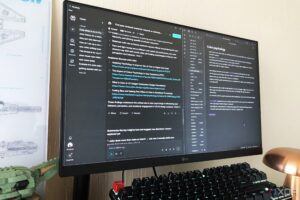
The United States military is advancing its naval capabilities with the development of Quicksink munitions, a program designed to enhance anti-ship warfare. Successful testing has led to the sinking of several decommissioned ships, showcasing the potential of these munitions in future conflicts, particularly in the Indo-Pacific region.
As tensions rise, the Chinese Navy is poised to deploy over 700 surface combatants, submarines, and support ships in a potential confrontation, significantly outnumbering the US Navy’s fleet. This strategic imbalance has prompted the US military to seek innovative and cost-effective solutions to counter China’s naval strength. The Quicksink program is positioned as a key component in this effort.
Understanding the Quicksink Program
According to the Air Force Research Lab, the Quicksink initiative is a “Joint Capability Technology Demonstration (JCTD)” that integrates existing Department of the Air Force technology. It aims to create an air-delivered, low-cost capability for sinking surface vessels. Quicksink munitions utilize existing guidance kits coupled with a new Weapon Open Systems Architecture (WOSA) seeker, which can be adapted to a variety of current and future munitions.
Initial trials have successfully tested both the 2,000-pound GBU-31/B Joint Direct Attack Munition (JDAM) and the 500-pound GBU-38 JDAM. These developments are crucial for the US military’s strategy against potential Chinese aggression in the Indo-Pacific, where traditional methods such as cruise missiles and torpedoes may not suffice given the numerical superiority of the Chinese fleet.
The Air Force Research Lab articulated the program’s objectives: “A Navy submarine has the ability to launch and destroy a ship with a single torpedo at any time, but by launching that weapon, it gives away its location and becomes a target. The QUICKSINK JCTD aims to develop a low-cost method of achieving torpedo-like seaworthy kills from the air at a much higher pace and over a much larger area than covered by a lumbering submarine.”
Adaptability and Strategic Implications
One of the most significant strengths of the Quicksink program is its adaptability across various platforms. Quicksink munitions can be deployed from a broad spectrum of aircraft, from the stealthy B-2 Spirit strategic bombers to the agile F-15EX Eagle II fighter jets. As the program evolves, other aircraft types, including transport planes and AC-130 gunships, may also be equipped to carry these munitions, vastly enhancing anti-ship capabilities.
The B-2 Spirit, for instance, can carry up to 80 500-pound Quicksink munitions. Although larger munitions may ultimately be needed to effectively sink enemy warships, this capacity implies that a limited number of aircraft could have a substantial impact on operations, such as a hypothetical Chinese amphibious assault on Taiwan.
The ongoing testing of Quicksink munitions has yielded promising results, with several successful sinkings of decommissioned vessels. The collaboration between the Air Force and Navy aims to refine a formidable anti-ship capability that enhances deterrence against China, thereby reinforcing the United States’ strategic position in the region.
As military dynamics continue to evolve, the Quicksink program represents a significant shift in naval warfare, potentially altering the landscape of maritime conflict in the years to come.







